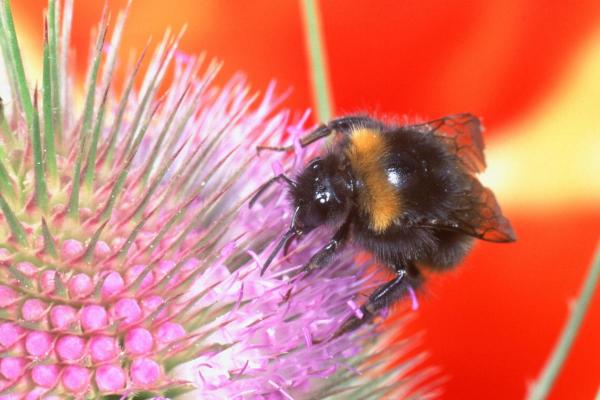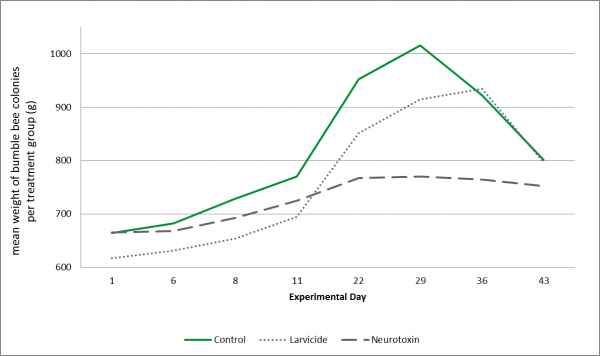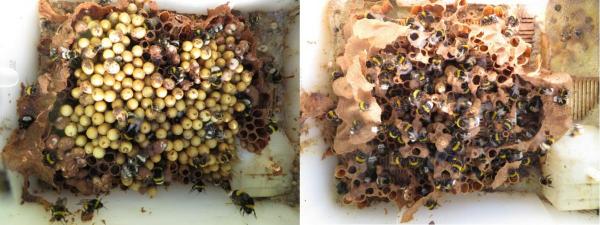- Your Product Type
- Your Study Type
- Aquatic Ecotoxicology
- Aquatic Invertebrates
- OECD 202: Daphnia sp., Acute Immobilisation Test
- OECD 211: Daphnia magna Reproduction Test
- OECD 235: Chironomus sp., Acute Immobilisation Test
- OECD 218/219: Sediment-Water Chironomid Toxicity Test Using Spiked Sediment/Spiked Water
- OECD 233: Sediment-Water Chironomid Life-Cycle Toxicity Test Using Spiked Water or Spiked Sediment
- OECD 225: Sediment-water Lumbriculus Toxicity Test Using Spiked Sediment
- OECD 242: Potamopyrgus antipodarum Reproduction Test
- OECD 243: Lymnaea stagnalis Reproduction Test
- Fish and other vertebrates
- OECD 203: Fish, Acute Toxicity Test
- OECD 215: Fish Juvenile Growth Study
- OECD 212: Fish, Short-term Toxicity Test on Embryo and Sac-fry Stages
- OECD 231: The Amphibian Metamorphosis Assay
- OECD 236: Fish Embryo Acute Toxicity Test
- OECD 210: Fish, Early-life Stage Toxicity Test
- OECD 229 Fish Short Term Reproduction Assay and OECD 230 21-day Fish Assay
- OECD 240 Medaka Extended One Generation Reproduction Test (MEOGRT)
- OECD 248: Xenopus Eleutheroembryonic Thyroid Assay
- OPPTS 850.1500: Fish Life Cycle Toxicity Test
- OÈCD 234 Fish sexual development test
- Aquatic plants
- Analytical Dose Verification
- Aquatic Invertebrates
- Chemistry
- Biodegradation Studies
- Analytical Chemistry Studies and Residues
- Physical-Chemical Properties Studies
- Storage Stability Studies
- OPPTS 830.6302, OPPTS 830.6303,and OPPTS 830.6304: Physical State, Colour and Odor at 20 °C and at 101.3 kPa
- EU A.1: Melting temperature/range
- EU A.2: Boiling temperature
- EU A.3: Relative density (liquids and solids)
- EU A.4: Vapour pressure
- EU A.5: Surface tension
- EU A.9: Flashpoint
- EU A.10: Flammability (solids)
- EU A.12: Flammability (contact with water)
- EU A.13: Pyrophoric properties of solids and liquids
- EU A.16: Relative self-ignition temperature for solids
- EU A.17: Oxidising properties
- OECD 114: Viscosity of Liquids
- Environmental Fate
- Transformation in Soil
- Transformation in Water
- Transformation in Manure
- Adsorption on Soil and Sewage Sludge
- Bioaccumulation and Bioconcentration
- Terrestrial Ecotoxicology
- Non-target Arthropods
- Non-target arthropod testing with the parasitic wasp (Aphidius rhopalosiphi)
- Non-target arthropod testing with the lacewing (Chrysoperla carnea)
- Non-target arthropod testing with the ladybird beetle (Coccinella septempunctata)
- Non-target arthropod testing with the predatory bug (Orius laevigatus)
- Non-target arthropod testing with the predatory mite (Typhlodromus pyri)
- Non-target arthropod testing with the rove beetle (Aleochara bilineata)
- Non-target arthropod testing with the carabid beetle (Poecilus cupreus)
- Non-target arthropod testing with the wolf spider (Pardosa spec.)
- Soil Organisms
- Honey Bees and other Pollinators
- OECD 213/214: Honey bees, Acute Oral and Acute Contact Toxicity Test
- OECD 245: Honey Bee (Apis Mellifera L.), Chronic Oral Toxicity Test (10-Day Feeding)
- OECD 237: Honey Bee Larval Toxicity Test, Single Exposure
- OECD 239: Honey Bee Larval Toxicity Test
- EPPO 170: Honey Bee Field Study – do plant protection products effect honey bee colonies?
- Oomen et al. 1992: Honey Bee Brood Feeding Study
- OECD 75: Honey Bee Brood Test under Semi-field Conditions in Tunnels
- OECD 246/247 Acute Oral and Contact Toxicity to the Bumblebee, Bombus terrestris L.
- Solitary Bee Acute Contact Toxicity Study in the Laboratory (Osmia sp.) Solitary Bee Acute Oral Toxicity Study in the Laboratory (Osmia sp.) (protocols for ringtests with solitary bees recommended by the non-Apis working group)
- SANTE/11956/2016 rev.9 Residue trials for MRL setting in honey
- Non-target plants
- OECD 208: Terrestrial Plant Test - Seedling Emergence and Seedling Growth Test
- OECD 227: Terrestrial Plant Test - Vegetative Vigour Test
- OCSPP 850.4100: Seedling Emergence and Seedling Growth
- OCSPP 850.4150: Vegetative Vigor
- EPPO PP 1/207(2): Efficacy evaluation of plant protection products, Effects on succeeding crops
- Field Studies
- Non-target Arthropods
- Ecological Modelling
- Quality Assurance
- Testing of Potential Endocrine Disruptors
- Aquatic Ecotoxicology
- News
- Company
- Career
- Contact
Solitary Bee Acute Contact Toxicity Study in the Laboratory (Osmia sp.) Solitary Bee Acute Oral Toxicity Study in the Laboratory (Osmia sp.) (protocols for ringtests with solitary bees recommended by the non-Apis working group)
The global decline of pollinators (honey bees, bumble bees, solitary bees) has been a research topic for the last couple of years, as these insects play a pivotal role in crop and food production as well as for maintenance of plant biodiversity.
Scientists discuss several factors involved in this decline, among them habitat loss, diseases, parasites, beekeeping techniques, and for agricultural areas plant protection products. Especially plant protection products have received considerable public attention and regulatory agencies all over the world have indroduced new testing requirements for the environmental risk assessment of these substances.
For bumble bees (Bombus spp.) there have been only few guidelines available so far. To fill this gap, ibacon is currently developing testing designs and GLP-protocols for several additional bumble bee studies.
One of these study designs is the “Bumble bee study in tunnels under semi-field conditions”. The protocol was adapted from the existing protocols for honey bee semi-field and field studies. Our intention was to develop suitable methodologies and to define appropriate endpoints for statistical evaluation.
The global decline of pollinators (honey bees, bumble bees, solitary bees) has been a research topic for the last couple of years, as these insects play a pivotal role in crop and food production as well as for maintenance of plant biodiversity.
Scientists discuss several factors involved in this decline, among them habitat loss, diseases, parasites, beekeeping techniques, and for agricultural areas plant protection products. Especially plant protection products have received considerable public attention and regulatory agencies all over the world have indroduced new testing requirements for the environmental risk assessment of these substances.
For bumble bees (Bombus spp.) there have been only few guidelines available so far. To fill this gap, ibacon is currently developing testing designs and GLP-protocols for several additional bumble bee studies.
One of these study designs is the “Bumble bee study in tunnels under semi-field conditions”. The protocol was adapted from the existing protocols for honey bee semi-field and field studies. Our intention was to develop suitable methodologies and to define appropriate endpoints for statistical evaluation.
Twelve bumble bee colonies were set in individual tents planted with phacelia and adapted to their new environment for a few days. The plants were then sprayed with one of two insecticides (four tents each), a larvicide and neurotoxin that affects mature bees, or were left as a control (four tents). After seven days of direct exposure to the treated crop, all bumble bee colonies were removed from the tents to an area with untreated crops. All colonies were weighed, photographed and assessed once a week for further eight weeks and were frozen at the end of the experiment for later assessment.
We found that the test design was suitable for bumble bee testing. Commercially available bumble bee colonies can be used and the time needed for setup of the experiment and the assessments is reasonable.
One of the endpoints investigated is the total colony weight. The control group shows the normal development (see figure above). The production of workers leads to an increase in the overall weight of the colonies until the time when queen production begins. As no more workers are produced, the total number of bees and thus the weight of the colony decreases from then on.
Treatment with a neurotoxin that only affects mature bees had a visible effect on weight gain of the colonies. As can be seen in the picture below, only very few eggs and pupae were produced even though queens were present.
Treatment with a larvicide leads to a delayed queen production. Colonies appeared normal with only a slight reduction in brood cells but some bees with abnormal development could be observed.
These results show that the total colony weight can be used as an endpoint in bumble bee semi-field studies.
Our research now focuses on the following questions:
Unlike honey bees, bumble bees build brood cells on top of each other. Therefore, digital evaluation of the brood cells as it is routine in honey bee studies is not possible. Can we still determine the number of brood cells containing pupae as a measure for colony development?
It should be possible to determine the beginning of queen production in the control colonies but this can be delayed due to the treatment. Therefore, the ideal duration of the bumble bee semi-field study still needs to be determined and could be longer than 43 days.
Chemicals can have an effect on bee size and weight so it might not be possible to distinguish queens from worker bees only by their size. Thus, it can be necessary to find other ways to identify queens.
We are currently working on these questions and will be able to offer you Bumble bee semi-field studies in the near future.



